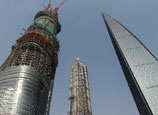
According to the report, the average household income in 2010 was 71,500 yuan ($11,500) for urban families, and 28,400 yuan for rural households.
Social security income was a major difference between the two. For example, the average pension income for urban families was 33,000 yuan, while for rural families it was only 12,000 yuan.
Educational background was another decisive factor for income level. People who have a bachelor's degree or above earn four times more than those who did not finish junior high school.
"There are many references to how to reduce the inequality," Gan said.
"In the short-term, it can be achieved via a sound secondary allocation system, and in the long-term, government needs to raise the education level and provide more equal access to opportunities."
According to Gan's research, if the government uses the growth in its fiscal income - which has increased by an average of 20 percent annually in recent years - plus the profits from State-owned enterprises, it will have 3.8 trillion yuan in hand to subsidize 60 percent of the low-income families, and bring China's Gini coefficient down from 0.61 to 0.4.
Despite the still large inequality, the gap between China's rich and poor has now come to a turning point, according to a report from Beijing Normal University's Labor Market Research Center.
Lai Desheng, director of the center, said although many considered the gap to be still widening, the income difference between the urban and rural areas has been declining in recent years, which can be regarded as a sign of reduced inequality.
In addition, the incomes of the lower and middle classes were growing faster than the high-income groups, which suggests the difference between rural and urban residents is also shrinking.
















 Cumquat market in S China's Guangxi
Cumquat market in S China's Guangxi


![]()
